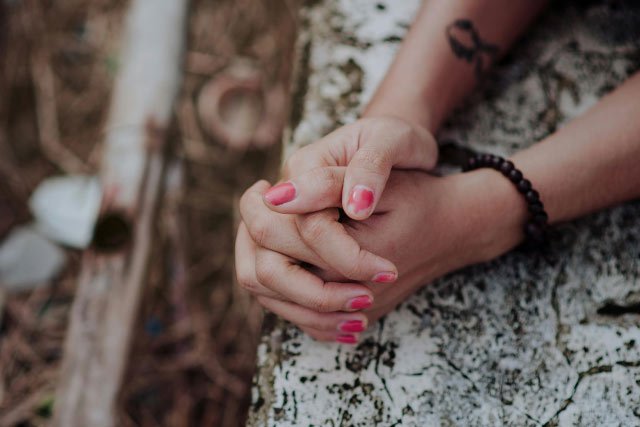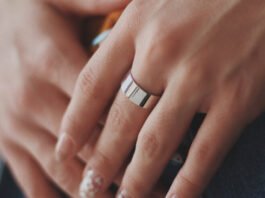
In recent times, hematite jewelry has surged in popularity, captivating enthusiasts with its aesthetic allure and purported healing properties. However, beneath its visual charm lies a spectrum of potential hematite side effects that individuals should be well-informed about before embracing these accessories. This comprehensive guide navigates the intricate landscape of hematite jewelry, unraveling its beauty and potential risks.
1. Exploring Hematite

Hematite, classified as a mineral form of iron oxide, boasts a distinctive metallic sheen that lends itself well to jewelry making. Its dark gray to black hues and smooth texture make it a sought-after choice for bracelets and necklaces. Beyond its ornamental appeal, hematite is revered for its alleged grounding and balancing qualities, believed to foster emotional stability and overall health and wellness.
2. Delving into Hematite Jewelry Side Effects

While many individuals experience positive effects from wearing hematite jewelry, it is imperative to delve into the potential side effects that may arise. Understanding these nuances allows enthusiasts to make informed decisions about incorporating hematite into their accessory collection. Here are 15 side effects that merit consideration:
2.1. Dehydration Dilemmas
Wearing hematite jewelry may inadvertently contribute to dehydration, owing to its unique absorbent properties. The mineral can draw moisture from the body, potentially leading to gradual dehydration. This effect becomes more pronounced in hot weather or during strenuous physical activities that induce excessive sweating.
Maintaining proper hydration is paramount to mitigate the risk of dehydration while donning hematite jewelry. Consistent water intake throughout the day can counterbalance any moisture absorption by the stone, preventing discomfort or health complications linked to dehydration.
Furthermore, exercising caution during hot weather or strenuous activities is advisable. Temporarily removing the jewelry in such circumstances helps minimize the risk of dehydration and ensures a more comfortable experience.
2.2. Allergic Reactions
While hematite is generally well-tolerated, some individuals, particularly those with sensitive skin, are prone to allergic reactions. Allergic responses may manifest as redness, itchiness, swelling, or rashes upon skin contact with hematite.
Individuals may experience difficulty breathing or chest tightness in severe cases, indicating a potentially severe allergic reaction. Immediate medical attention becomes imperative in such instances.
Until consultation with a healthcare professional and guidance on managing allergic reactions is secured, it is judicious to abstain from hematite exposure to prevent further adverse effects.
2.3. Internal Organs at Risk
The erosive nature of hematite poses potential risks, particularly when prolonged exposure to water is involved. When in contact with water or water-based substances, hematite jewelry may undergo rusting, generating iron oxide that could stain the skin and cause discoloration.
Refraining from wearing hematite jewelry during activities involving extended water exposure, such as bathing or swimming, is recommended to avoid potential internal organ damage. Swift removal of hematite jewelry if it comes into contact with water prevents rusting and subsequent skin staining.
Individuals grappling with kidney issues should approach hematite with caution due to its purported connection to kidney stones and related problems. Consultation with a healthcare professional before hematite use is crucial for those with pre-existing kidney conditions.
Moreover, the magnetic properties inherent in hematite can disrupt electronic devices like watches. Consequently, individuals concurrently using hematite jewelry and electronic devices must exercise mindfulness to minimize potential interference, ensuring a harmonious coexistence.
In rare instances, hematite particles dispersed through agricultural machinery have proven detrimental to certain animal species, underscoring the importance of responsible handling to prevent environmental risks.
2.4. Hormonal Harmony or Havoc?
Hematite’s interaction with the body’s energy systems introduces the possibility of hormonal imbalances. This influence on hormones may manifest in diverse ways, including mood swings, irritability, fluctuations in weight, and alterations in sex drive.
Pregnant individuals are advised to exercise caution and avoid hematite, considering its potential impact on hormonal equilibrium. Similarly, vigilance around infants is crucial to avert potential adverse effects of hematite exposure.
2.5. Skin Irritation Woes
Hematite’s elevated iron content endows it with the capacity to induce skin irritation, especially in individuals with sensitive skin. Hematite can trigger redness, swelling, or itching upon skin contact, necessitating attentive management.
Promptly washing the affected area with soap and water is recommended for skin irritation. Ceasing contact with hematite until irritation subsides is prudent. If symptoms persist or worsen, seeking guidance from a healthcare professional ensures appropriate intervention and treatment.
Galvanic corrosion, a chemical reaction occurring when metal interfaces with metal, may contribute to skin irritation or allergic reactions when hematite comes into contact with the skin. Untreated, this reaction can escalate to blistering.
Furthermore, exercising caution when placing hematite near the eyes is essential, given its magnetic properties that pose potential risks of eye damage if not adequately protected.
2.6. Digestive Discomfort
Reports have surfaced linking hematite jewelry to digestive issues in certain individuals. Although the precise mechanism remains unclear, interactions between hematite and the digestive system may manifest as stomach discomfort, nausea, or changes in bowel movements.
Individuals experiencing digestive problems while wearing hematite jewelry should discontinue use and seek consultation with a healthcare professional. Potential links between hematite and digestive discomfort can be explored through evaluation, guiding further actions and recommendations.
2.7. Implantable Medical Devices
Hematite, with its magnetic properties, raises concerns about potential interference with implantable medical devices like pacemakers or defibrillators. The magnetic field generated by hematite can potentially disrupt the electrical signals of these devices, leading to malfunctions.
Individuals with implantable medical devices must consult their healthcare providers before adorning themselves with hematite jewelry. This precautionary step ensures an assessment of the specific characteristics of the medical device, offering informed guidance on the safety of wearing hematite without compromising device functionality.
2.8. Blood Clotting Blues
The iron content in hematite may impact the body’s blood clotting mechanisms. Elevated iron levels or alterations in blood clotting may elevate the risk of bleeding or compromise the effectiveness of blood-thinning medications.
Those with bleeding disorders or individuals taking medications affecting blood clotting should exercise caution when considering hematite jewelry. Consultation with a healthcare professional is paramount to assess potential risks associated with hematite and devise a tailored strategy for safe management.
2.9. Allergic Dermatitis
Prolonged or repeated exposure to hematite may precipitate allergic dermatitis, an inflammatory skin condition characterized by redness, itching, and the development of a rash. Individuals with sensitive skin or a history of skin allergies are particularly susceptible to this reaction.
In cases of allergic dermatitis, discontinuation of hematite use is advised, coupled with seeking medical advice. Dermatologists or allergists can conduct evaluations and necessary tests and provide suitable treatment options for alleviating symptoms.
2.10. Sleep Disruptions
Anecdotal evidence suggests that wearing hematite jewelry may disrupt sleep patterns in certain individuals. Although the precise cause remains elusive, hypotheses point to hematite’s energetic properties or potential impact on electromagnetic fields.
Individuals noticing changes in sleep quality, difficulty falling asleep, or irregular sleep patterns following hematite use may find relief by removing the jewelry during sleep. Persistence of sleep disturbances warrants consultation with a healthcare professional or sleep specialist to identify underlying causes and devise appropriate strategies for improved sleep.
2.11. Wound Healing Woes
Hematite’s purported influence on blood circulation and iron levels introduces the theoretical possibility of interference with the body’s natural wound-healing processes. While scientific evidence directly linking hematite to impaired wound healing is limited, caution is advised.
Individuals with wounds or those in post-surgical recovery are urged to refrain from wearing hematite jewelry in the vicinity of affected areas. Adherence to healthcare provider instructions regarding wound care and avoiding potential hindrances to proper healing remains essential.
2.12. Electromagnetic Sensitivity
Certain individuals exhibit heightened sensitivity to electromagnetic fields, a condition known as electromagnetic sensitivity or hypersensitivity. Symptoms range from headaches and fatigue to dizziness and difficulty concentrating.
Consultation with a healthcare professional before incorporating hematite jewelry is recommended for those predisposed to electromagnetic sensitivity. Professional guidance facilitates sensitivity management and offers alternative jewelry options more aligned with individual well-being.
2.13. Medication Interactions
Hematite’s properties and potential interactions with the body introduce medication efficacy and safety considerations. The iron content in hematite may interfere with the absorption or effectiveness of medications requiring specific pH levels or binding sites for optimal absorption.
Disclosing hematite use to healthcare providers is crucial to ensure a comprehensive evaluation of potential interactions. Adjustments to medication regimens, if necessary, can be made to uphold patient safety and maintain the effectiveness of prescribed treatments.
2.14. Blood Pressure Ballet
Hematite jewelry may influence blood pressure levels, although the exact mechanisms remain unclear. Speculations center around hematite’s energetic properties or potential impact on circulation as contributors to blood pressure fluctuations.
Individuals with pre-existing concerns about blood pressure or those undergoing medication for blood pressure management should monitor their levels while wearing hematite. Consultation with healthcare providers upon noticing significant changes ensures a comprehensive assessment of hematite’s impact and allows adjustments to treatment plans if deemed necessary.
2.15. Emotional Echoes
Hematite’s energetic properties, often celebrated for their grounding effects, may introduce the possibility of emotional overload in certain individuals. Emotional sensitivity, feelings of overwhelm, or intense emotional reactions may surface for those attuned to hematite’s influence.
If the wearing of hematite jewelry exacerbates emotional challenges or induces distress, discontinuation of use is advised. Seeking support from healthcare professionals or therapists allows for exploring alternative approaches to emotional management and guidance toward jewelry options more conducive to overall well-being.
3. How to Minimize Hematite Side Effects

While hematite jewelry offers potential benefits, adopting a proactive approach to minimize associated side effects enhances the overall experience. Consider these practical guidelines to enjoy the beauty of hematite jewelry while mitigating potential risks:
3.1. Stay Hydrated
Given hematite’s potential to contribute to dehydration, maintaining adequate hydration is crucial. Drinking plenty of water throughout the day counterbalances the mineral’s absorbent properties, preventing discomfort and health issues related to dehydration.
Especially during hot weather or strenuous activities inducing excessive sweating, prioritizing hydration remains paramount. Carrying a water bottle as a constant companion ensures ready access to hydration, minimizing the risk of dehydration associated with hematite jewelry.
3.2. Limit Contact with Water
Hematite’s erosive nature and susceptibility to rusting warrant caution during water exposure activities. Removing hematite jewelry before bathing or swimming prevents potential damage and discoloration.
Minimizing contact with water prolongs the lifespan of hematite jewelry, reducing the likelihood of adverse reactions. Embracing this practice aligns with responsible jewelry care, ensuring hematite pieces’ longevity and aesthetic appeal.
3.3. Consider Allergies and Sensitivities
Individuals with sensitive skin or a history of allergies should approach hematite with prudence. Conducting a patch test before prolonged wear provides valuable insights into potential allergic reactions.
Applying a small amount of hematite jewelry to a discreet skin area allows observation of any adverse reactions over 24 hours. Redness, itching, or other signs of allergic response necessitate refraining from hematite use and seeking medical advice to navigate sensitivities.
3.4. Take Breaks and Listen to Your Body
Attuning oneself to the body’s signals is crucial when wearing hematite jewelry. If discomfort, irritation, or changes in well-being arise, taking breaks from jewelry use allows the body to recover and readjust.
Regular intervals of jewelry-free periods minimize potential side effects and contribute to a more comfortable overall experience. This proactive approach aligns with a mindful appreciation of one’s physical responses to hematite’s influence.
3.5. Choose High-Quality Jewelry
Opting for high-quality hematite jewelry from reputable sources significantly diminishes the risk of impurities or excessive iron content. Well-crafted jewelry enhances comfort during wear, reducing the likelihood of irritation or discomfort.
Investing in quality pieces ensures a positive experience and aligns with responsible consumer choices. Reputable sources prioritize craftsmanship, delivering hematite jewelry that meets stringent quality standards.
3.6. Consult with a Healthcare Professional
Individuals with pre-existing medical conditions, ranging from kidney issues to bleeding disorders, should engage in dialogue with healthcare professionals before incorporating hematite into their accessory repertoire. Personalized guidance based on specific health circumstances ensures informed decision-making.
Consultation with healthcare providers extends to those using implantable medical devices, such as pacemakers or defibrillators. Understanding the potential implications of hematite’s magnetic properties on these devices allows for safe and informed choices regarding jewelry use.
3.7. Rotate Your Jewelry
Minimizing prolonged exposure to hematite’s properties can be achieved by rotating jewelry with other pieces. Alternating between different types of jewelry allows the body to acclimate, reducing the risk of overloading with hematite’s effects.
This practice supports individual comfort and introduces variety to accessory choices. Avoiding constant exposure minimizes potential sensitivities and contributes to an adaptable and enjoyable experience with hematite jewelry.
Embarking on a hematite journey requires a blend of attentiveness, self-care, and informed decision-making. By incorporating these considerations into the wearing and care of hematite jewelry, enthusiasts can enjoy the aesthetic appeal and potential benefits while minimizing associated risks.
4. Who Should Not Wear Hematite?

While hematite jewelry holds allure for many, certain individuals should exercise caution or avoid its use entirely. Understanding exclusions helps in making jewelry choices aligned with individual well-being. Here are specific groups who should approach hematite with caution:
4.1. Pregnant Women
Pregnant women are advised to abstain from hematite use due to concerns about its energy potentially impacting fetal development. The emitted energy could disrupt the mental faculties of the developing child. Opting for alternative stones or crystals ensures a safe and nurturing environment during pregnancy.
4.2. Children
Hematite jewelry, especially if crafted into small beads, poses a potential choking hazard for children. Given children’s innate curiosity and tendency to explore through mouth interaction, avoiding hematite use for this demographic is a prudent safety measure. Opting for non-metallic crystals and stones ensures both safety and aesthetic appeal for children.
4.3. Individuals with Pacemakers or Medical Devices
Those with pacemakers or other implantable medical devices featuring sensitivity to magnetic fields should steer clear of hematite. The magnetic properties inherent in hematite can interfere with the proper functioning of these medical devices, posing potential risks. Prior consultation with healthcare providers helps assess individual device characteristics and ensures safe choices regarding jewelry.
4.4. Metal Sensitivities
Individuals with known sensitivities to metals should exercise caution when considering hematite jewelry. While visually appealing, the elevated iron content may trigger rashes or irritation, necessitating a shift towards non-metallic crystals and stones. Prior consultation with a medical practitioner allows for informed decisions based on individual sensitivities.
4.5. Chronic Health Conditions
Those grappling with chronic health conditions should seek professional medical advice before incorporating hematite into their accessory collection. Consultation ensures a comprehensive understanding of potential interactions between hematite and existing health conditions, guiding personalized choices for safe and enjoyable use.
5. I Am Not Feeling Any Side Effects! Can I Wear Hematite?

Individuals not experiencing side effects can wear hematite but with an essential caveat – thoroughly considering exclusion criteria. Even without immediate hematite side effects, adhering to guidelines and exclusions outlined in this guide is crucial for long-term well-being.
5.1. Adhering to Guidelines
Reviewing this comprehensive guide provides a roadmap for safe and enjoyable hematite use. Individuals who are not feeling side effects can continue wearing hematite by incorporating prudent measures and staying informed about potential risks.
5.2. Continuous Awareness
Maintaining ongoing awareness of individual health status, potential sensitivities, and adherence to guidelines ensures a harmonious and beneficial experience with hematite jewelry, including the distinctive allure of the Broken Hematite Ring. Regular self-assessment and alignment with exclusion criteria contribute to sustained well-being while embracing hematite’s aesthetic and potential benefits.
6. Can You Wear Hematite Every Day?

Hematite’s durability allows for daily wear, but considerations should be tailored to individual comfort levels. The anchoring energy inherent in hematite may be intense for some, potentially causing headaches. Gradual acclimation to daily wear and attentive self-monitoring allow for optimized comfort and enjoyment.
6.1. Start Modestly, Build Tolerance
Commencing with modest wear durations and gradually increasing exposure allows individuals to build tolerance to hematite’s effects. This approach minimizes the likelihood of discomfort or side effects, fostering a positive and enduring relationship with hematite jewelry.
6.2. Consider Attire and Energy Levels
Hematite’s calming properties can be maximized by considering attire and energy levels. Opting for hematite jewelry while avoiding casual clothing can optimize its benefits during high-energy periods. This thoughtful selection process enhances the synergistic relationship between hematite and personal energy dynamics.
6.3. Contact Comfort
For optimal comfort, periodic cleaning of hematite jewelry is recommended. Cleaning after initial wear can mitigate potential discomfort, ensuring a clean and enjoyable experience. Regular care and maintenance contribute to the prolonged enjoyment of hematite’s aesthetic appeal and potential benefits.
6.4. Prized Possession
Hematite, once acclimated to it, often becomes a prized possession. The potential benefits of hematite can be maximized by allowing the stone to come into direct contact with the skin. Exploring various jewelry options, such as rings, brooches, earrings, and links, provides opportunities for personalized adornment.
Conclusion
Hematite jewelry offers a captivating journey filled with aesthetic allure and potential benefits. However, this journey necessitates thoughtful consideration, self-awareness, and adherence to guidelines to ensure a positive and harmonious experience. By understanding the intricacies of hematite side effects, embracing exclusions when necessary, and adopting a mindful approach to wear and care, individuals can embark on a hematite odyssey that enhances their well-being and aesthetic expression.



